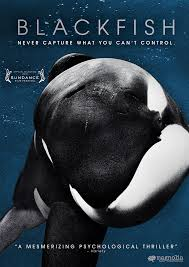The Truth About Blackfish

September 15, 2014
A little over a year ago, the propaganda-based and falsely claimed “documentary” film entitled Blackfish was released in New York City. After reading and viewing articles with SeaWorld employees (including trainers, veterinarians, researchers, and more), it is evident that this film was released to make money, win awards, and promote anti-captivity, even though roughly 85-90% of the film is lies. To summarize the following points based on research after viewing the film, Blackfish was designed to make the viewer feel; however, it was not designed to make the viewer think. Hence why the number of armchair activists who post statuses about “Free the whales!” and “They’re mistreated!” has risen, yet they continue to do no research to back up their points.
If you watch the film and then do your own research to find out the truth about the intent and content of it, you will soon realize the entirety of the film is extremely misleading. For example, the movie opens with orca whales and their trainers in the water performing behaviors set to scary music. This leads the viewer to believe the whale is getting aggressive, when in fact, it isn’t. These are behaviors the whales perform daily for mental and physical stimulation, in addition to other exercise and stimulation activities. Another example of misleading information is when a trainer named Sam tells the “documentary” crew how she remembers the first time she got to work with a whale, as she got on his back, and they swam around the perimeter of the pool. They then play footage of “Sam” doing this exact activity she just spoke about doing. However, the viewer doesn’t know this footage is of a completely different trainer! No, the misleading footage isn’t necessarily bad, but, the film continually does this throughout the entire movie, so the viewer never truly knows that this information is correct or incorrect. Another example is when the movie talks about aggressive incidents between orca whales and their trainers. They end this portion of the film with an image zoomed in on a trainer with a bloody face. This leads the viewer to believe that the bloody face was a result of an incident between this particular trainer and a whale. However, this particular trainer at SeaWorld later spoke out to clarify that the bloody face was a result of him falling and hitting his head before diving into one of the pools. There are many, many more examples of misconstrued information delivered in the film to result in more supporters of anti-captivity; however, it is highly encouraged to do your own research before developing an opinion.
Earlier I mentioned roughly 85-90% of this film is false. I stand with this percentage and many researchers, trainers, veterinarians, caretakers, and curators do as well. However, that does leave 10-15% of truth in the movie. The accurate information in the movie is included with footage from the 60s and 70s when whales were taken out from the wild. They were then transported to the parks and kept there. Whales have not been taken out of the wild since then. Kyle Kittleson, a marine mammal trainer of five years, says, “If SeaWorld was still taking killer whales from the wild, I would not work for that facility. Why would I work there if they were doing that? We, employees at SeaWorld, are the most passionate about these animals and I can guarantee we would not work here if we knew that what SeaWorld was doing was wrong.” The majority of whales at SeaWorld were born in the care of man or were rescued with the intent of rehabilitation and release. However, some whales who were rescued are not able to be released again and are then taken care of within the facility.
This brings me to the main goal of the entire film (besides ringing in cash and winning awards while claiming to only create this project on behalf of caring about the welfare of the whales): free them! Now, yes, some of the pools at SeaWorld may seem a bit small for the whales. This is displayed in Blackfish when they show Tilikum in an extremely tiny pool. But, surprise surprise, they do not tell you that the pool being shown is the small medical pool used for medical examinations. This is not Tilikum’s personal pool. All of the whales also have access to the biggest whale pool in the facility multiple times a day. However, this doesn’t quite satisfy the anti-captivity supporters of the public, so they want to know why they aren’t released into the ocean. This is because since 80% of the whales are born within the facility, they are used to being in waters that are constantly being maintained at the best temperature and quality for them, they are given the very best care possible including veterinary care, personal care, mental and physical stimulation and more, and their pools are constantly being cleaned and maintained so that the whales may not contract any diseases (although this is inevitable, and they get sick every once in awhile, just like us!). If these whales were to be released into ocean waters (which they have never experienced before), it would be extremely detrimental to their health. This is because it is such a drastic change than what they were used to, and this change would only cause them extreme amounts of stress. To put them in the ocean (or ocean pens, which anti-captivity supporters want at the very least), with changing temperature and currents, weird animals and fish swimming by they’ve never encountered, exposed to germs they’ve never been exposed to before and more drastic changes, would put these animals at risk. So why do anti-captivity supporters still want this? To make themselves feel better? Because this option is better for the whales? Those reasons are not good enough when we know very well that ocean pens are extremely detrimental to the whales’ well-being. That’s why they remain in their pools being taken care of by individuals with the most experience and passion for these creatures. (On a side-note, though, SeaWorld recently announced they will be expanding their tanks for the whales amounting to an additional 5-million gallons of water. These new areas will also include a “water treadmill” used for physical stimulation and research. These expansions are planned to begin construction in 2015 and end in 2018.)
So, maybe after reading all of this you’re still thinking, “Then why do zoos and aquariums keep animals in captivity to make money off them?” Let’s not forget the incredible impact zoos and aquariums, in particular SeaWorld, have on the public. Their mission is to educate the public and inspire them about different species of animals and marine mammals, in hopes that someday maybe you’ll join their rescue and rehabilitation center or pick up trash off the beach or make sure you properly dispose of your fishing line, so it doesn’t harm any marine life. In particular, SeaWorld inspires children and young people. Just one interaction with a marine mammal can give a child an entire different perspective on marine life than she has ever had before. With that perspective, she creates an interest in preserving those animals. Then, with this interest, maybe she starts participating in cleaning litter on the beach or donating to local zoological facilities to enhance their research. But this interaction that sparks her interest can only happen through a zoo or an aquarium. So now with this interest, children and their families come to SeaWorld and spend money in various areas of the park. Now, I recognize this money goes to the bottom line and stockholders and whatnot, but it also goes to research and the mission of conservation of these animals. To date, SeaWorld has spent tens of millions of dollars rescuing more than 23,000 animals. There is no other facility that goes to this extent to spread their message of conserving these animals.
There are approximately 35 full-time members of the killer whale training staff at SeaWorld Orlando, who each work over 40 hours a week. However, SeaWorld Orlando only has seven killer whales. This mean each whale gets the full-time attention and care of five trainers, let alone the full-time veterinary staff within that particular facility, the nation-wide on-call veterinary staff, the individuals who maintain water temperature, quality and levels, and more. Each whale gets the best possible care available. Yet, people still watch Blackfish, get very hyped up because, again, it is a film designed to make you feel but not think. Then, they fall under the category of armchair activists. These are people who update their statuses about how SeaWorld is an awful corporation and go to bed feeling good because they believe they’ve made a difference. If each of these people dedicated their time to places such as puppy mills, where animals truly are being mistreated, they actually might be making a difference in these animals’ lives and welfare.
So, to conclude, the public continues to watch this film and not do their own research, which results in their believing the killer whales are being mistreated, meanwhile, they could be discovering how truly they are in the best of hands. Ex-trainers who were misrepresented in Blackfish can also attest to this, as they have done in multiple interviews online post-premiere of the film. They have stated that not only were they completely misrepresented, but the film’s director, Gabriela Cowperthwaite, completely misled these ex-trainers about the intent of the film. When the film was executed and premiered, these particular trainers said that the final product was a complete 180 to what Gabriela said to expect (a film about the welfare of the animals/how to help and a compassionate remembrance of late trainer Dawn Brancheau’s death – neither of which happened).
Although I’ve merely touched on a few aspects of what is misleading and untrue about the propaganda-based and falsely entitled “documentary” Blackfish, you still have to develop your own opinion. However, it is highly encouraged to do your own research before developing an opinion based off an emotionally manipulative film whose content is 85-90% false. So…where do you stand?
Here are some sources from which I was able to develop my opinion on the film:
http://da15bdaf715461308003-0c725c907c2d637068751776aeee5fbf.r7.cf1.rackcdn.com/adf36e5c35b842f5ae4e2322841e8933_4-4-14-updated-final-of-blacklist-list-of-inaccuracies-and-misleading-points.pdf – A PDF file which breaks down every single bit of inaccurate information in the film
http://marinemammaltrainer.com/the-truth-behind-blackfish/ – The Truth Behind Blackfish
http://micechat.com/53915-blackfish-exposed/ – Blackfish Exposed by Former SeaWorld Trainer
http://micechat.com/54370-blackfish-backlash/ – More Blackfish Backlash – Tilikum’s Trainer Dives in
http://melissaasmith.hubpages.com/hub/blackfish-film – Why Blackfish is Misleading, Unoriginal, and ‘Stupid’







